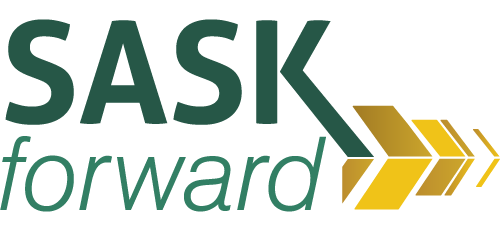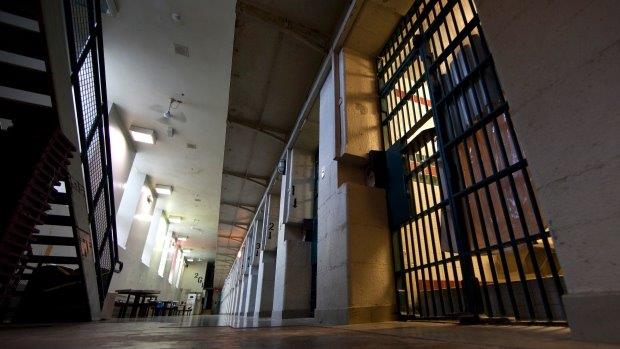OVERCROWDING IN SASKATCHEWAN PRISONS
Over the last decade, overcrowding has become a major issue in the Saskatchewan prison system.
Prison Boom
- The Saskatchewan prison population has grown by 51% since 2006.
- The current prisoner population is 1,792.
- Thus cells that were built for one prisoner are being double-bunked; and recreational, educational, and religious spaces have been converted into sleeping areas.
- 39% of Saskatchewan prisoners are on remand; that is they are in prison for offences they have not yet been convicted of.
- Many of those on remand are there because of administration of justice offences, sometimes called “breach offences”: violations of often petty, complicated, hard-to-keep court-imposed rules regarding minor problems such as the breaching of probation or bail conditions.
- In 2015, Saskatchewan police laid administration of justice charges at four times the national average.
The Implications
- Remand contravenes the principle of innocent before being proven guilty.
- Studies show that there is a link between crowding inside prisons and violence.
- According to the provincial auditor, Judy Ferguson, “Saskatchewan’s short-term measures to provide additional housing for inmates, such as its use of double-bunking and converting rehabilitation program and visitor space into living space, is not sustainable. These measures shrink space available for rehabilitation programming. Rehabilitation is key to reducing repeat offences and reintegrating inmates into society.”
- According to Howard Sapers, the Correctional Investigator of Canada, crowding inside prisons “can lead to less than optimal living and working conditions, and can restrict access to vocational training and psychologists.” In Sapers’ view, “All of that just adds stress to an already stressful environment—that’s counterproductive in terms of the rehabilitative goals of the corrective system.”
OVERREPRESENTATION OF INDIGENOUS PEOPLE IN THE SASKATCHEWAN PRISON SYSTEM
The Numbers
Indigenous people are vastly overrepresented in provincial prisons in Saskatchewan. While Indigenous people make up 17% of the population of Saskatchewan, they constitute:
- 80% of the youth in Saskatchewan prisons.
- 80 – 90% of the men in Saskatchewan prisons.
- Up to 90% of the women in Saskatchewan prisons.
Saskatchewan has the highest incarceration rate for Indigenous people among the provinces.
Indigenous people
- Are also overrepresented in remand and segregation.
- Have lower parole rates.
- Are more likely to return to prison on revocation of parole, often for administrative reasons, not criminal violations.
Systemic Racism
The overrepresentation of Indigenous people in Saskatchewan prisons is directly linked to systemic racism against Indigenous peoples, which is itself rooted in settler colonialism. Almost everywhere in Canadian society whiteness is an advantage and Indigenous identity a disadvantage.
The Saskatchewan justice system is no exception. A 2014 study by Jim Scott, a Saskatoon defence lawyer, found that “Aboriginals in Saskatchewan have been sentenced to well over twice the amount of jail time as non-Aboriginals.”
Scott also found that Saskatchewan judges are not applying the Gladue Principle, a 1999 Supreme Court ruling that requires Canadian judges to take into account, when sentencing, the historic and on-going injustices against Indigenous people, including the residential school system, the Sixties Scoop, and an underfunded child welfare system.
PRISON PRIVATIZATION
Prisons are big business, especially during a prison boom. Some corporations are making a killing as the Saskatchewan prison system is increasingly privatized. Profit (not service) is their only value.
PRIVATIZATION OF PRISON FOOD SERVICES
As part of its prison privatization scheme, in 2015 the Wall government privatized prison food services, contracting out meal preparation to Compass Group, a for-profit, multi-national corporation. Now meals for Saskatchewan’s prison population are prepared in Alberta and trucked in frozen. Since food privatization took effect, prisoners at Regina’s Correctional Centre have gone on a number of hunger strikes, citing concerns about food quality and quantity.
Rehabilitation
Nutritious food is an essential part of prisoner rehabilitation and brings lasting benefits to prisoners and society.
Colonial Settler Society Policies
The privatization of prison food services must be seen in its particular cultural and historical context:
- The demographics of Saskatchewan’s prison population is 80% – 90% Indigenous.
- Its relationship to other colonial settler society polices using food to weaken and control Indigenous peoples: ►John A. Macdonald’s starvation policy, implemented in 1878, to force Indigenous peoples into submission ►inadequate diets at residential schools that undermined the health of generations of Indigenous children.
- The call of the Truth and Reconciliation Commission for reconciliation between Indigenous and non-Indigenous peoples.
Premier Brad Wall’s Colonial Mindset
Brad Wall’s response to the prisoners’ concerns? “If you really don’t like the prison food, there’s one way to avoid it, and that’s don’t go to prison.” Wall would be well-advised to read the report of the Truth and Reconciliation Commission.
Canadian Charter of Rights and Freedoms
Adequate food of reasonable quality is a Charter right, under section 12, banning cruel and unusual punishment.
Universal Declaration of Human Rights
Article 25 of the Universal Declaration of Human Rights provides:
Everyone has the right to a standard of living adequate for the health and well-being of him[her]self and of his[her] family, including food, clothing, housing and medical care and necessary social services, and the right to security in the event of … lack of livelihood in circumstances beyond his [her]control.
PRIVATIZATION OF PRISON PHONE SERVICES
In 2014, a contract was signed with Telmate, which turned prisoner-family phone contact into a for-profit enterprise. A long distance call now costs $1 for the initial connection and 30 cents a minute. Many prisoners cannot afford to keep in contact with family and friends. No prisoners should be cut off from family and community. It makes reintegration into society on release much more difficult and re-offense much more likely. However, the Saskatchewan government’s privatization of prison phone services must also be seen in its particular cultural and historical context:
- The demographics of Saskatchewan’s prison population: 80% – 90% Indigenous.
- The relationship between the privatization of phone services and other white colonial settler society policies aimed at disrupting Indigenous families and communities: ►the residential school system ►the 60s scoop ►the underfunding of First Nations child and family services.
- The call of the Truth and Reconciliation Commission for reconciliation between Indigenous and non-Indigenous peoples.
PRISONS ARE NOT THE ANSWER!
- Keeping someone locked up is hugely expensive.
- It costs $166 per day to keep a person in a provincial prison in Saskatchewan. That’s $60,590 per year, more than the total tuition and room and board for a university student.
- Currently there are 1,792 prisoners in Saskatchewan prisons, bringing the total annual bill to $108,577,280—money that comes out of the pockets of Saskatchewan citizens.
- Funding incarceration means that resources are cut from education, health care, social services, and job creation programs. If even half of the current amount spent annually on imprisoning people in Saskatchewan were to be invested in these areas, everyone in Saskatchewan would benefit enormously.
- Uphold the principle of innocent until proven guilty and find alternatives to remand incarceration for administration of justice offences. Also eliminate from the judicial system all petty, complicated, hard-to-keep bail and probation conditions.
- The vast majority of crimes committed in Saskatchewan are non-violent. High incarceration rates are bad for the economy. Incarceration doesn’t do most prisoners any good either. Indeed, it often does them terrible damage. There should be alternatives to incarceration for non-violent offences.
- Prisons destroy families. Parents are separated from their children. Even mothers and their infants are parted. In Saskatchewan, where the majority of prisoners are Indigenous, imprisonment is, in its impact on families, a continuation of the residential school system.
- Very little is done in Saskatchewan prisons to ensure prisoners can return to society. There is not much in the way of rehabilitation services. Education programs and skill training are at a minimum. Thus recidivism rates are very high.
- The number of prisoners with mental health problems continues to increase, yet the level of mental health services has remained the same or diminished.
- Some prisoners have substance use or addiction problems. There are very few drug rehabilitation programs in Saskatchewan prisons.
- There is little treatment for prisoners suffering from FASD.
- Incarceration does not address or solve the problems resulting from colonization, residential schools, and systemic racism.
Indigenous people are shockingly overrepresented in the Saskatchewan prison system. What steps has the Saskatchewan government taken to ensure the Gladue Principle is being applied in Saskatchewan courts? Annual reports on progress should be mandatory. It has been over a year since the release of the final report of the Truth and Reconciliation Commission—a report that contains a number of calls to action directed at provincial justice systems:
- Recommendation # 30: “To commit to eliminating the overrepresentation of Aboriginal people in custody over the next decade, and to issue detailed annual reports that monitor and valuate progress in doing so.”
- Recommendation # 31: “To provide sufficient and stable funding to implement and evaluate community sanctions that will provide realistic alternatives to imprisonment for Aboriginal offenders and respond to the underlying causes of offending.”
- Recommendation # 34: “To undertake reforms to the criminal justice system to better address the needs of offenders with Fetal Alcohol Spectrum Disorder (FASD).”
- Recommendation # 38: “To commit to eliminating the overrepresentation of Aboriginal youth in custody over the next decade.”
- Recommendation # 42: “To commit to the recognition and implementation of Aboriginal justice systems in a manner consistent with the Treaty and Aboriginal rights of Aboriginal peoples, the Constitution Act, 1982, and the United Nations Declaration on the Rights of Indigenous Peoples, endorsed by Canada in November 2012.”
SOURCES
Jason Demers’ “Warehousing Prisoners in Saskatchewan: A Public Health Approach” (CCPA 2014) and Nancy Macdonald’s “Justice is not blind” (Maclean’s February 29, 2016) were particularly helpful resources in creating this submission:
Other sources include:
James T. D. Scott, “Reforming Saskatchewan’s Biased Sentencing Regime,” (2014): http://www.spmlaw.ca/scdla/JimScott_sentencing_bias_2014.pdf
“Overcrowding hampering Canada’s prisons,” CBC, November 20, 2015.
“Overcrowding plagues jails,” Leader-Post, December 9 2016.
“Failings of failure to comply,” Leader-Post, December 24, 2016.
“Saskatchewan government’s effort to reduce remand numbers welcome,” Leader-Post, January 13, 2017.

